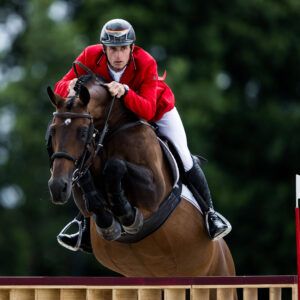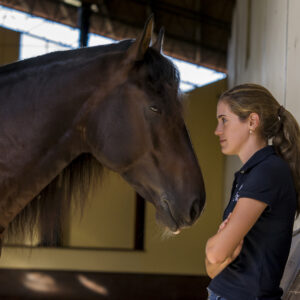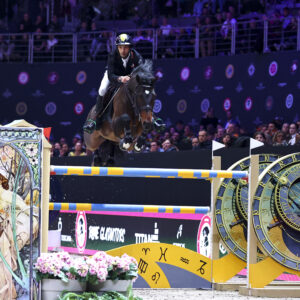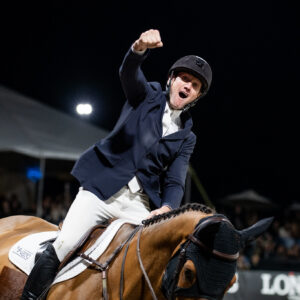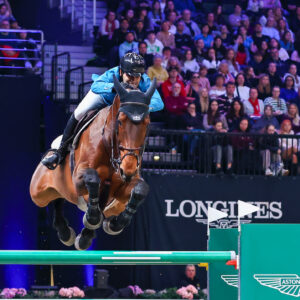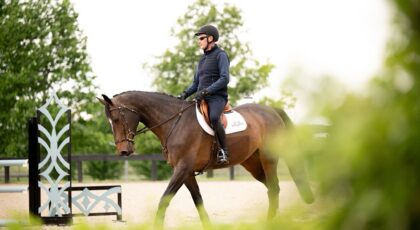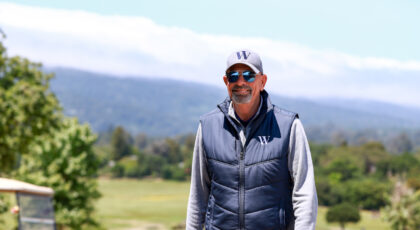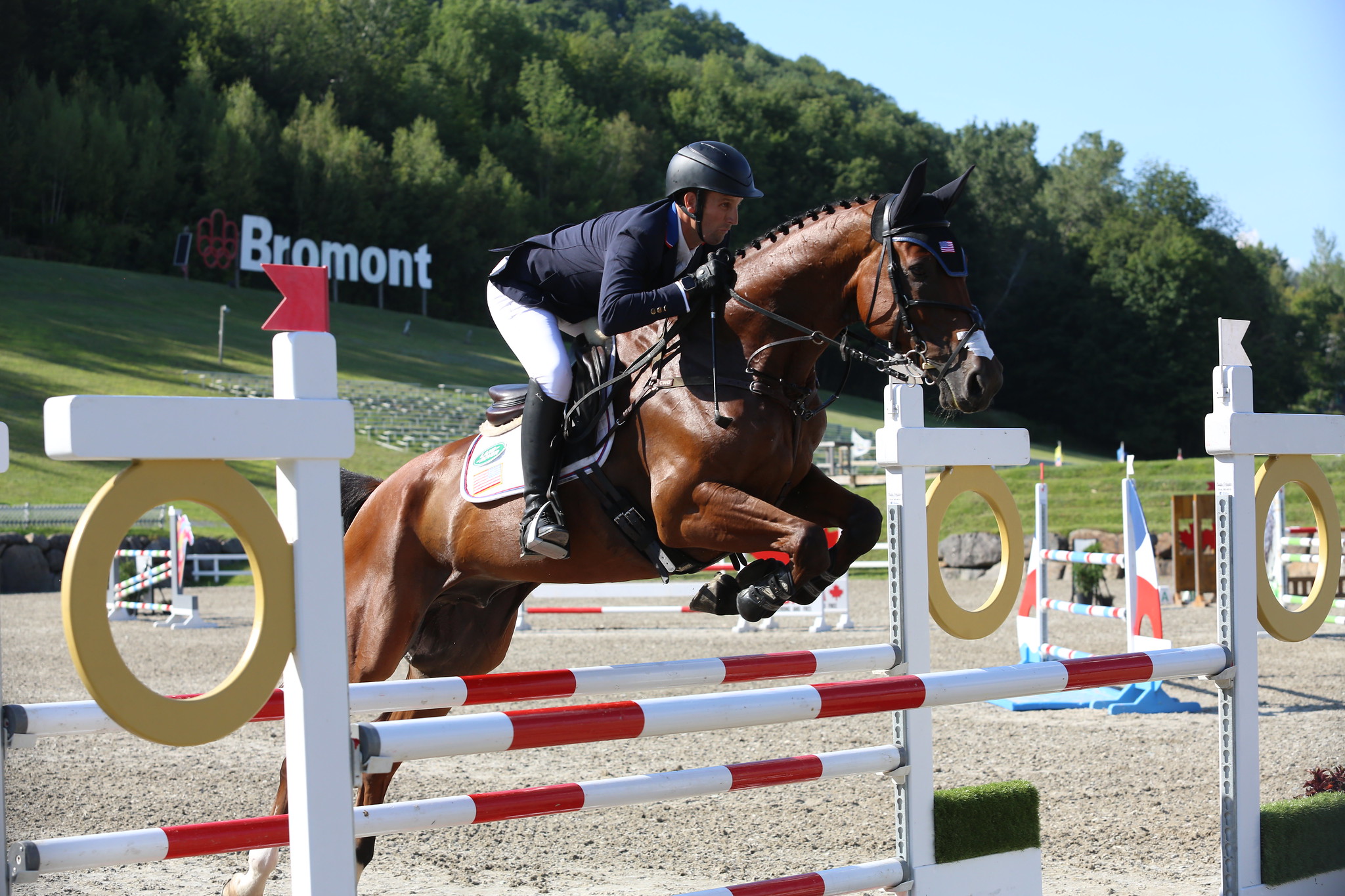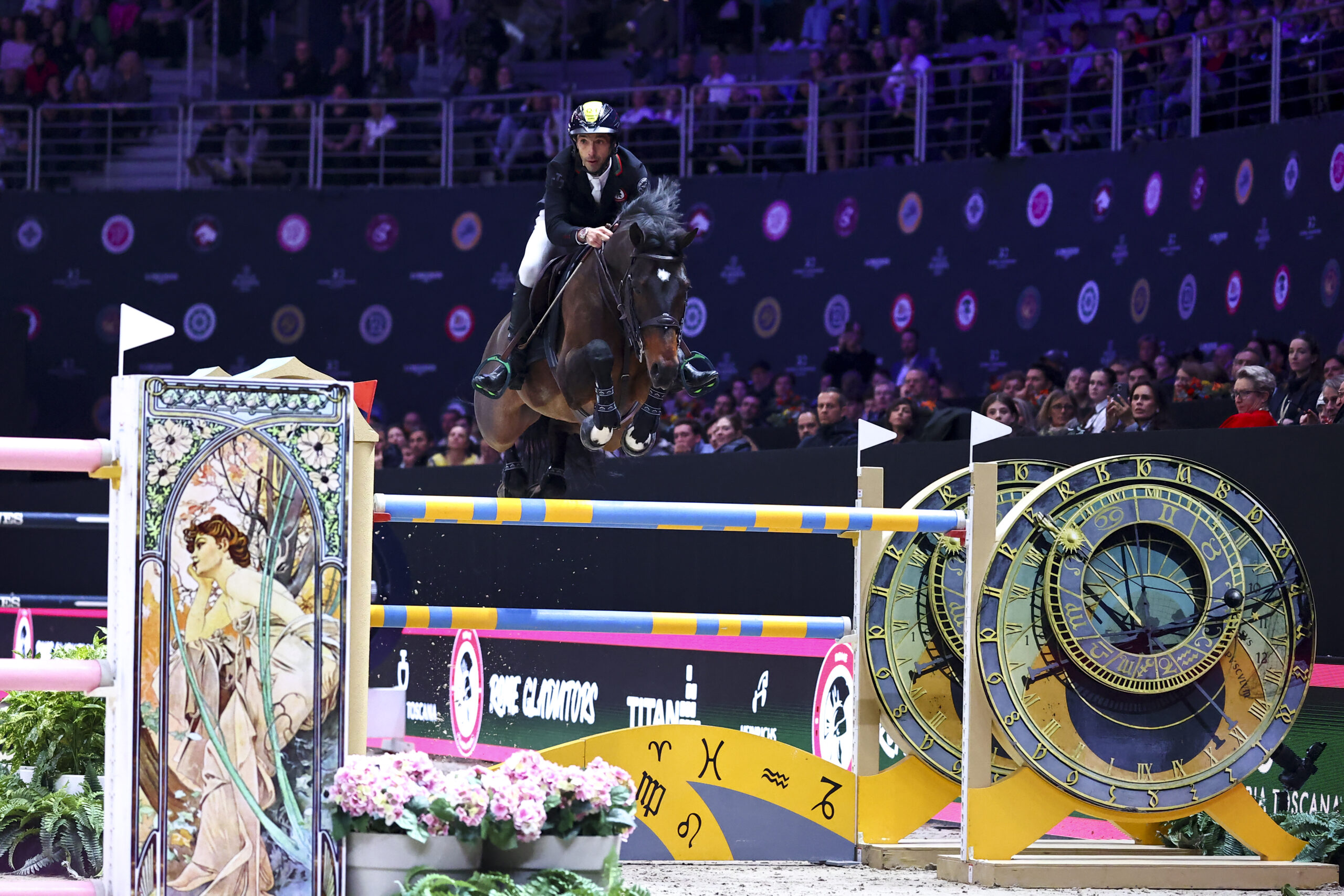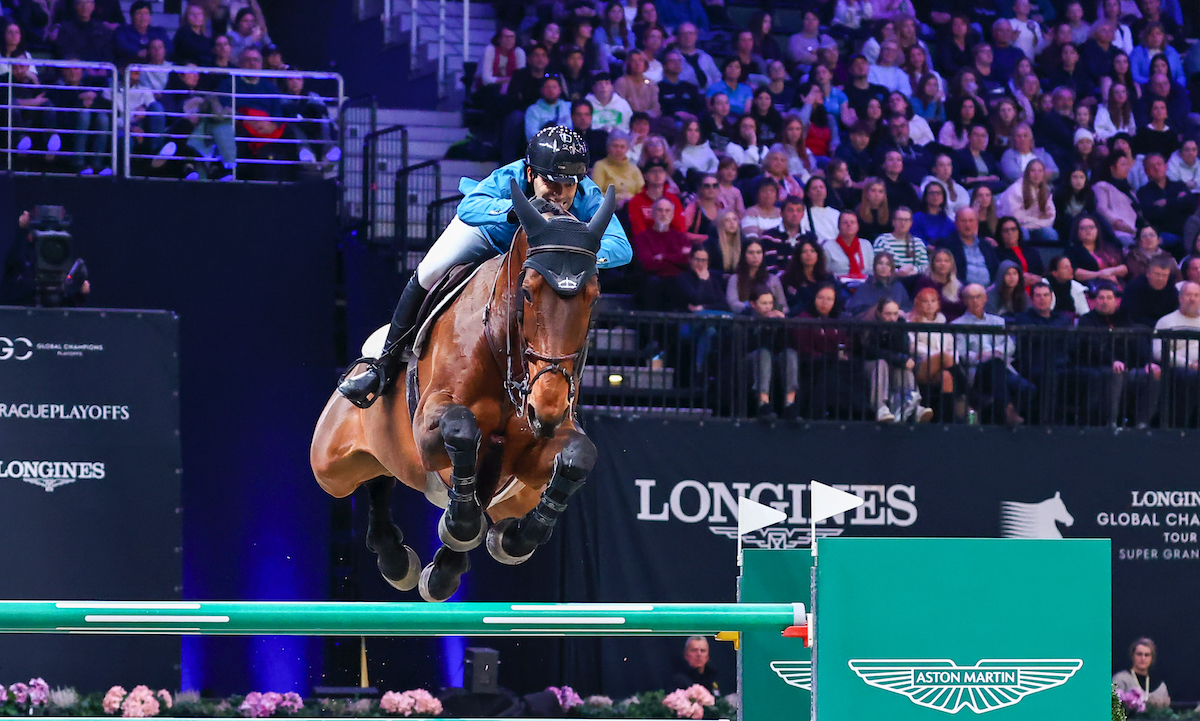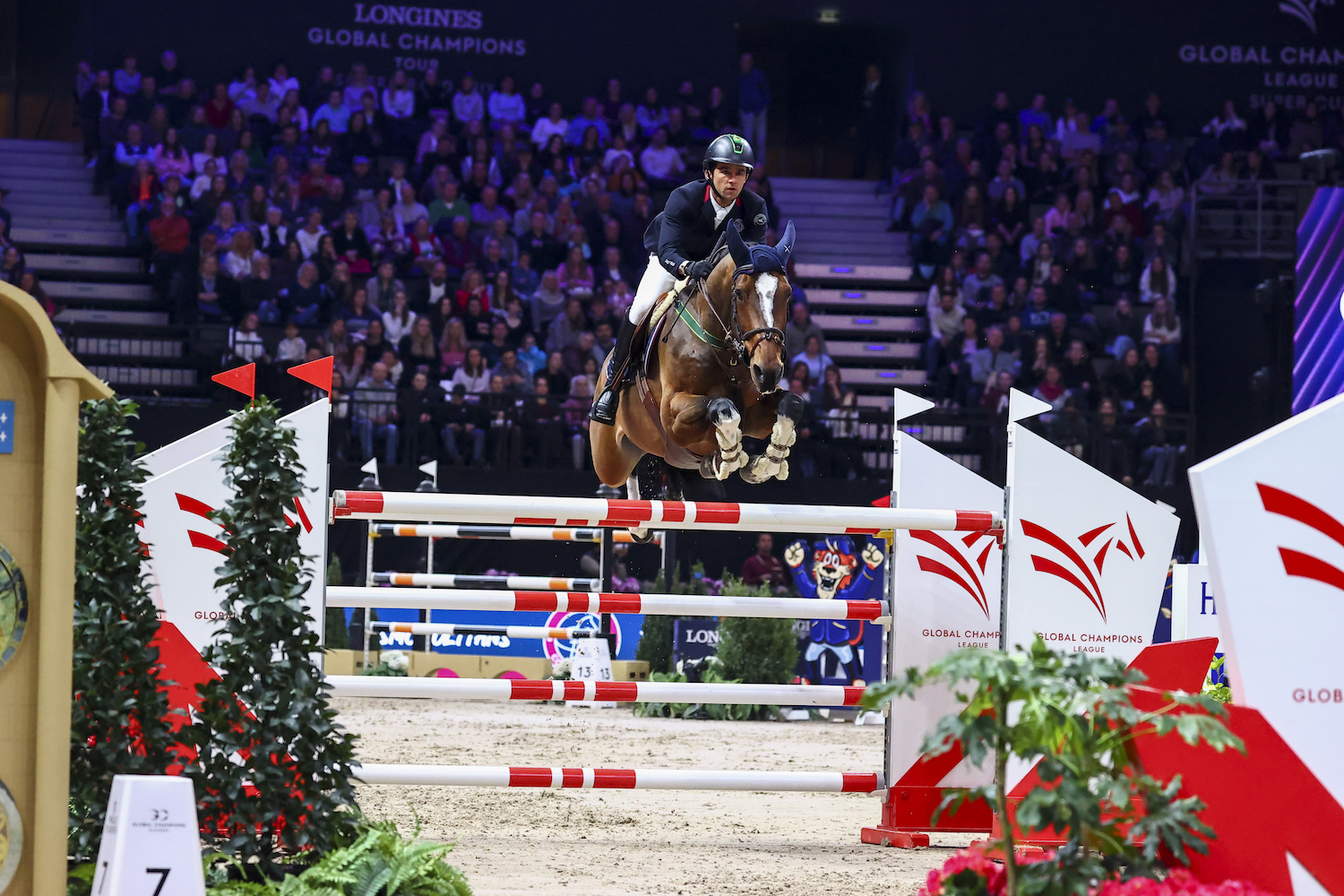Forget no-stirrup-November. For many riders (**raises hand**) there is literally nothing scarier than trot jumps.
Unfortunately for us, according to 2018 FEI World Equestrian Games Team gold medalist and 2018 FEI World Cup Finals runner-up Devin Ryan, practicing trot jumps is important for a whole host of reasons—from building confidence in young horses to re-training older horses that may have developed a jumping issue.
“I believe that when you trot a jump, you can teach a horse to get to the base and still get out of their own way. I think it starts with young horses, but over the years, I’ve had a lot of people send me horses that stopped, and I’ve fixed a lot of horses trotting jumps,” Ryan explains. “Because off the trot, it’s not always a perfect distance.”
And that’s just the point. Ryan says that while many riders get nervous about trot jumps, practicing them—and learning to feel comfortable jumping from the spot that comes up—can help to build a rider’s confidence right along with his or her horse’s.
“The idea is to start low and small, because lots of times, the horse stops at a jump because it doesn’t know how to find its own distance and help out the rider.
“Two of the reasons I find that horses stop is, [first], that the rider guns them in the last two to three strides. Eventually, after you do that one too many times, you’ve lost rideability. Then, you either crash, or leave long to an oxer [and force the horse to stretch], and then the horses start to get nervous and scared.
“The other reason is that riders just get too handsy and back the horse off too much from the jump. I teach all my horses to trot forward through the turn, and then wait, and slow down to the jump. So in that way, they learn to get comfortable waiting, and if they get deep, which is the idea, to still jump out of that [spot].”
According to Ryan, it’s important to practice trotting only small vertical fences at first, and no oxers. Eventually, as the horse gains confidence, you can work on trotting taller verticals, teaching your horse to find his own distance, pat the ground, rock back, and better use himself while jumping.
And, whether you’re trotting fences to teach a young horse, develop a jumping partnership with a more experienced mount, or fix a pre-existing issue, the idea is the same. Trotting helps the horse learn to handle a variety of take-off spots, which can ultimately help the rider out when things don’t go 100 percent to plan.
“Then, horses learn to be confident when they get deep,” Ryan says. “Maybe some people would say that it’s a little old-school, but I’ve found it works in my program.”
Devin Ryan’s 3 Tips For Trot-Jumps
1. On the system:
“Whether trotting or cantering, always teach horses one system. Come forward through the turn and then wait. I do the same thing at the trot, and that carries into the canter, and the horses learn to be rideable; they learn to wait and not pull you past the distance.”
2. On the approach:
“I never accelerate in the last three strides [to the fence]. If you’re staying the same or waiting, you’re loading the hind end,” Ryan notes. “But the rule of thumb is, never accelerate in that danger zone of the last three strides. Stay the same or fit it in.”
3. On teaching young horses:
“All my young horses, especially my five-year-olds learning to jump, the first exercise that we do is a little cross-rail with a 10-foot landing pole. We’ll trot it and land, trot it, and land—so they take a little step, and a little breath, and they work on staying straight. Then I’ll make a little vertical, and we’ll trot [that], and we’ll finish cantering it.”


 November 6, 2023
November 6, 2023 





